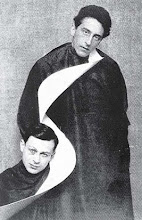432.
Which bird in the United States has the largest tail?
Many birds have extremely long tail feathers, both in proportion to their bodies and in actual length. The ring-necked pheasant, brought to American from Europe and naturalized, has the longest tail feathers. Its relative, the golden pheasant, often raised by pheasant fanciers, has an even longer tail. Of the native birds, the wild turkey has the longest tail feathers while the scissor-tailed flycatcher has the longest in relation to its body length. In all these instances, it is the male bird of the species that shows the extreme length of the retrices.
Many birds have extremely long tail feathers, both in proportion to their bodies and in actual length. The ring-necked pheasant, brought to American from Europe and naturalized, has the longest tail feathers. Its relative, the golden pheasant, often raised by pheasant fanciers, has an even longer tail. Of the native birds, the wild turkey has the longest tail feathers while the scissor-tailed flycatcher has the longest in relation to its body length. In all these instances, it is the male bird of the species that shows the extreme length of the retrices.
435.
How do birds with extremely long tails
such as the pheasant or very broad tails like those of the turkey control
them?
Among the multitude of skin muscles of a bird are many that control the tail making instantaneous work of extreme adjustment whether tilting, fanning or contraction.
Among the multitude of skin muscles of a bird are many that control the tail making instantaneous work of extreme adjustment whether tilting, fanning or contraction.
365.
Is it true that some birds produce musical sounds with their wing
feathers?
Goldeneye ducks are often called whistlers by hunters because of the whistling sounds produced by their wing feathers as they fly. Similar sounds are produced by the wing feathers of other birds, among them mourning doves, as they fly.
Many birds produce sounds deliberately with their wing feather. Among such birds are the ruffled grouse, which makes booming sounds, turkeys that make clicking sounds, and woodcock, which, with wing feathers having special development, plunge downward through the night, causing the air to whistle through them.
Goldeneye ducks are often called whistlers by hunters because of the whistling sounds produced by their wing feathers as they fly. Similar sounds are produced by the wing feathers of other birds, among them mourning doves, as they fly.
Many birds produce sounds deliberately with their wing feather. Among such birds are the ruffled grouse, which makes booming sounds, turkeys that make clicking sounds, and woodcock, which, with wing feathers having special development, plunge downward through the night, causing the air to whistle through them.
366. Does the
sound made by the wing feathers serve any purpose?
The sounds produced by the wing feathers of grouse, turkeys and woodcock all play a part in courtship activities.
The sounds produced by the wing feathers of grouse, turkeys and woodcock all play a part in courtship activities.
NOTE: This post is dedicated to my mother, Joan Brown Roberts, who really loved the wild turkeys who lived in her meadow in Tuxedo Park, New York and made us love and appreciate them also. Here's one (link).
From: 1001 Questions Answered About Birds by Allan D. Cruickshank and Helen G. Cruickshank (Toronto, General Publishing Company, 1958)











